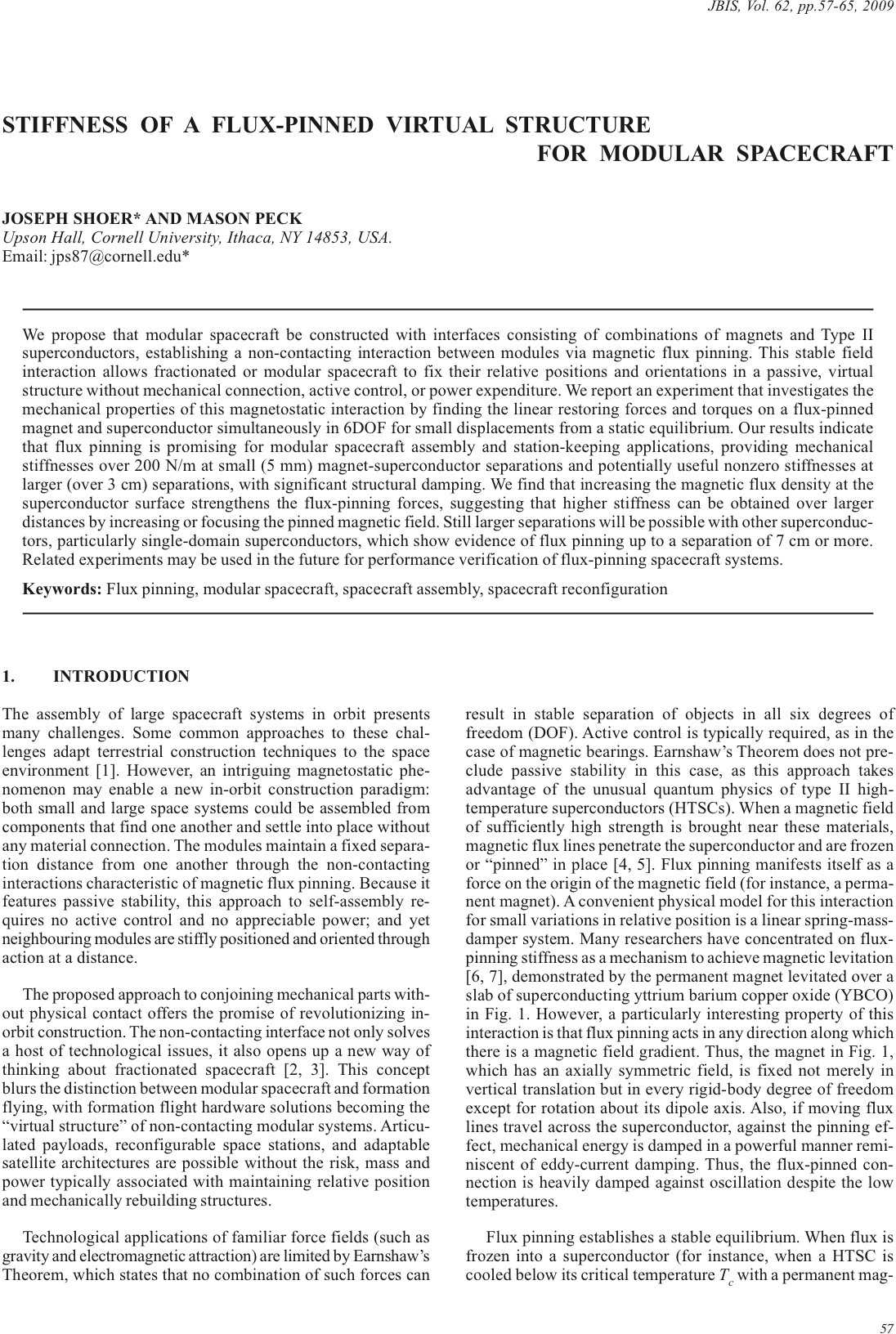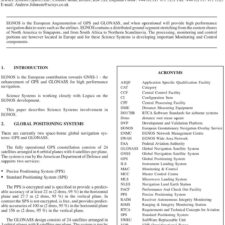Stiffness Of A Flux-Pinned Virtual Structure For Modular Spacecraft
£5.00
J. Shoer; M. Peck (2009), JBIS, 62, 57-65
Refcode: 2009.62.57
Abstract:
We propose that modular spacecraft be constructed with interfaces consisting of combinations of magnets and Type II superconductors, establishing a non-contacting interaction between modules via magnetic flux pinning. This stable field interaction allows fractionated or modular spacecraft to fix their relative positions and orientations in a passive, virtual structure without mechanical connection, active control, or power expenditure. We report an experiment that investigates the mechanical properties of this magnetostatic interaction by finding the linear restoring forces and torques on a flux-pinned magnet and superconductor simultaneously in 6DOF for small displacements from a static equilibrium. Our results indicate that flux pinning is promising for modular spacecraft assembly and station-keeping applications, providing mechanical stiffness’s over 200 N/m at small (5 mm) magnet-superconductor separations and potentially useful nonzero stiffness’s at larger (over 3 cm) separations, with significant structural damping. We find that increasing the magnetic flux density at the superconductor surface strengthens the flux-pinning forces, suggesting that higher stiffness can be obtained over larger distances by increasing or focusing the pinned magnetic field. Still larger separations will be possible with other superconductors, particularly single-domain superconductors, which show evidence of flux pinning up to a separation of 7 cm or more. Related experiments may be used in the future for performance verification of flux-pinning spacecraft systems.





